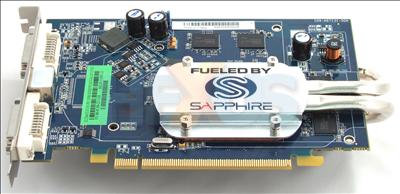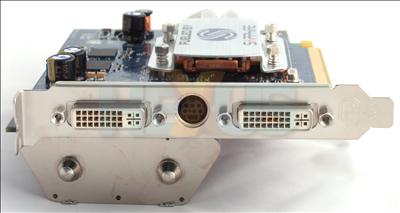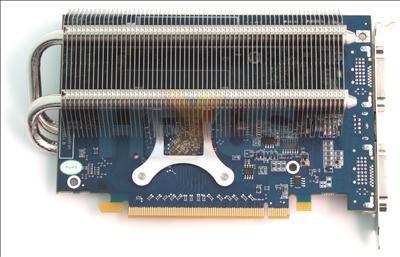Sapphire ULTIMATE X1650 Pro 256MiB appearance
Sapphire's ULTIMATE family of graphics cards aims to add that little extra to the base design, be it custom cooling, overclocking, or both. We've already taken a look at the ULTIMATE X1950 Pro and were impressed with its performance.Sapphire, though, has chosen the Radeon X1650 Pro SKU to launch a zero-noise model.
Common sense would dictate that the Pro model is simply a slower-clocked version of the 'XT, as per the HIS card on the previous page.
That, however, is just clever (and misleading) nomenclature. The X1650 Pro, formerly known as X1600 XT, belongs to a previous generation and, as such, packs in 12 fragment processors, 5 vertex shaders, and 4 ROPs and 4 texture units, compared to the XT's 24/8/8/8. Further, X1650 Pro doesn't support internal CrossFire or HDCP-enabled outputs as standard, either.
Thinking about that in relation to X1650 XT on a clock-for-clock basis, X1650 Pro will be significantly slower, so it needs an appropriately lower price tag to compensate.
The lower power and cooling requirement is manifested by a smaller heatsink on the topside. The GPU is clocked in at the default 600MHz and GDDR3 memory, left bare, at 1400MHz. Clock speeds are a touch higher than the 'XT's, but the underlying architecture is such that it won't trouble the 'proper' X1650.
The angled shot shows the top-mounted heatsink takes up the usual single slot. A lack of CrossFire connectors dictates that CrossFire support will be provided via the PCIe bus.
Here you can see where the heatpipes go. Sapphire has decided to mount most of the cooling on the rear, so whilst the backplate is representative of a regular single-slot card's, the package takes up two slots. You'll have to determine if the cooling orientation fits in with your chassis.
Both DVI ports are dual-link but, crucially, don't offer HDCP compliance, which means that playing back Blu-ray or HD-DVD content at its full resolution will not be possible without some jiggery-pokery.














